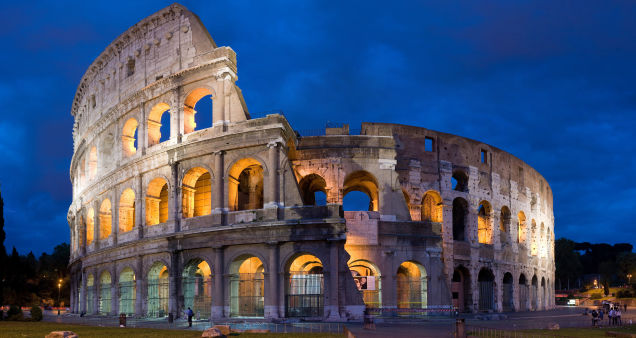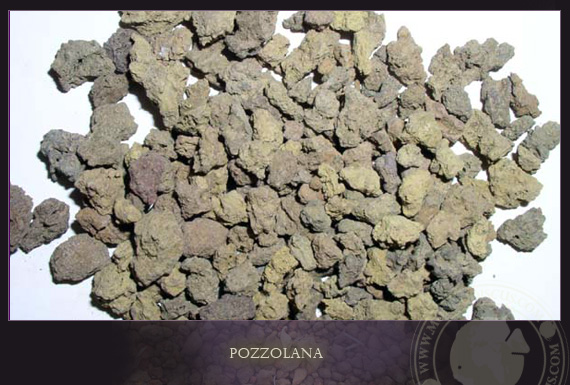Story of concrete - king of construction materials
Concrete, what can we say about it? A very popular construction material in modern life, some people know it is the result of mixing cement, water and lime . and what else? Looks like it is all right? It seems that we know too little about one thing while we think we know a lot about it .
The most popular building material on the planet: concrete
Once upon a time
As mentioned above, concrete is an artificial material formed from many different materials: cement, water, lime . However, it is only true for modern concrete form - the main factor of an industry worth $ 100 billion - while concrete has a long history. According to archaeological studies about 2,000 years ago, Roman people knew how to use volcanic ash mixed with water as a " special concrete" in creating works of the latter century, most typical is the Colosseum in Rome.

Colosseum Arena - Rome, Italy.
Specifically, the ancient craftsmen of the port city of Pozzuoli (now the capital of Naples, Italy) became extremely famous thanks to a series of materials called pozzolana - the main component is volcanic ash of Mount Campi Flegrei nearby. According to archaeological records, pozzolana was dubbed the "divine material " when just mixing it with water was a flexible soil that could be shaped at will and when dried, it would be created with solid rock. Walls invulnerable to enemies. This is the first "concrete" form of humanity.

Pozzolana volcanic ash - Ancient concrete.
So why can volcanic ash make such a miraculous material? Archaeologists have discovered pozzolana is a mixture of silicon dioxide (SiO2), which is abundant in fish , and lime (CaO) - 2 of the 3 main components of concrete before the cement appears. Immediately, the archaeological team came to the aid of Stanford University geological experts to study the crater area of Campi Flegrei.
The research team after collecting enough data discovered the crater area with a lot of limestone (CaCO3), under the extremely high heat of this area, a basic chemical reaction happened:
CaCO3 → CaO + CO2
When the volcano erupts, the CaO layer accumulates for a long time and will shoot into the air and fly away. Many large pieces will fly towards the coast not far away and mixed with sandy sea, the craftsmen in Pozzuoli discovered them and they happened to find the wet areas can become extremely solid sure when they are dried in the sun. Concrete originated like that.
Modern face
After the Roman Empire collapsed, the idea of what pozzolana could disappear forever, in 1824, Joseph Aspdin officially created Portland cement - laying the foundation for modern concrete. With calcination of silicon-rich limestone and clay under 600 degrees Celsius, Joseph Aspdin created calcium silicate (Ca2SiO4) just like the volcano Campi Flegrei once did.
With the advent of Portland cement, the construction industry really changed after the 40s of the 19th century. Even the experts created many different types of concrete to suit the purposes of use. Specifically.
Here are the most typical modern concrete types:
1. Reinforced concrete

Reinforced concrete is very familiar to humans.
Reinforced concrete is a combined construction material of two materials , concrete and steel . This combination offers many outstanding advantages for reinforced concrete. Steel and concrete have similar thermal expansion coefficients, thus avoiding the influence of ambient temperature.
Concrete protects reinforcement from environmental invasion, concrete positioning steel to prevent cracking. Concrete has poor tensile and bending properties, when there is reinforcement this disadvantage will be overcome because steel is a good material to withstand drag. In most current projects, reinforced concrete acts as the main bearing structure for the whole project.
2. Permeable concrete

Absorbent concrete is used for roads because of its water permeability.
Water absorbent concrete with outstanding advantages such as reducing rainwater pollution and groundwater protection is a new direction for environmentally friendly concrete technology. This new concrete technology is being developed by countries all over the world, especially in countries where water pollution and environmental pollution issues have serious consequences.
The ability to absorb water through concrete while ensuring the strength and longevity helps this type of concrete surpass the traditional concrete. In the world, there have been some countries applying concrete to infiltrate in construction works such as roads, sidewalks, car parks . and have achieved high environmental, economic and economic results. structure, aesthetics .
3. Nano concrete

Nano concrete will create a green revolution in the construction materials industry.
Currently, cement-based concrete is the most produced construction material in the world with about 5.2 billion cubic meters annually. In which the cement production process consumes a lot of energy, with annual production around 2.1 billion tons of cement equivalent to emitting about 5% of global gas.
In recent years, researchers have demonstrated that the use of nanomaterials as additives for cement-based building materials has created durability in transition areas that make Their properties are markedly improved. Using nanoparticles and nanofibers as additives in concrete production not only makes the strength of Ultra High Performance Concrete possible dozens of times, but also a lot of properties. Other substances such as melting and adhesion (in self-compacting concrete, shotcrete, ready-mixed concrete), corrosion resistance or preventing magnetic fields can be best achieved.
4. Biological concrete
Although concrete is of the "stone " type of material, it still cannot win the time when constructions made of concrete will appear incurable cracks. Biology professor Jonkers proposed a type of concrete that could " heal " cracks only by bacteria and rainwater.
Strange stories are true: concrete self-healing cracks.
Specifically, the Bacillus and / or Sporosarcin a bacteria will be dormant and packaged in very small particles, similar to white, fine powder and added to concrete structures during construction. They will be packaged with calcium lactate.
When cracks appear on the structure, micro pellets will break, water enters and bacteria are awakened. Then they begin to "eat the food" that has been stored. As a result, they emit hard limestone compounds, fill cracks and prevent access to structural damage (water may cause steel frames to rust).
According to Professor Jonkers, most buildings have a lifespan of about 20-30 years, this strain of bacteria can sleep for 200 years without food. Therefore, this approach can extend the life of the construction work more decades than usual.
School existed at the same time?
In recent times, people have started to search for materials to replace concrete but before any ideas become reality, concrete is still the first choice for construction works. Well, according to the latest statistics, concrete is the most used artificial material in the world, even its consumption is greater than the consumption of plastic, steel and aluminum combined.
Appeared early. Lost for a long time. Back strong. Concrete - king of materials.
- Discover the unique roll fabric technology for construction
- Concrete bending - this kind of material can create revolution in the construction industry
- Concrete self-healing cracks
- Concrete is devastatingly natural as much as plastic waste
- Turning waste bricks into concrete
- The road itself absorbs 4,000 liters of flooded water in a minute
- Find a way to create concrete with materials on Mars
- Build houses from coconut shells
- He tested the self-healing concrete potholes
- The reinforced concrete house is old, people are building wooden skyscrapers
- Video: Foam can lift more than 70 tons of concrete
- Special concrete aerosols help prevent earthquakes
 'Fine laughs' - Scary and painful torture in ancient times
'Fine laughs' - Scary and painful torture in ancient times The sequence of numbers 142857 of the Egyptian pyramids is known as the strangest number in the world - Why?
The sequence of numbers 142857 of the Egyptian pyramids is known as the strangest number in the world - Why? History of the iron
History of the iron What is alum?
What is alum? Japan creates concrete that does not emit CO2
Japan creates concrete that does not emit CO2  The world's first carbon-absorbing concrete house
The world's first carbon-absorbing concrete house  The US military researches bio-concrete that self-heals damage from within
The US military researches bio-concrete that self-heals damage from within  Meta for artificial intelligence researching new ways to mix concrete
Meta for artificial intelligence researching new ways to mix concrete  Research and production of new super concrete from old tires
Research and production of new super concrete from old tires  Bio-receptive concrete promotes moss growth
Bio-receptive concrete promotes moss growth 